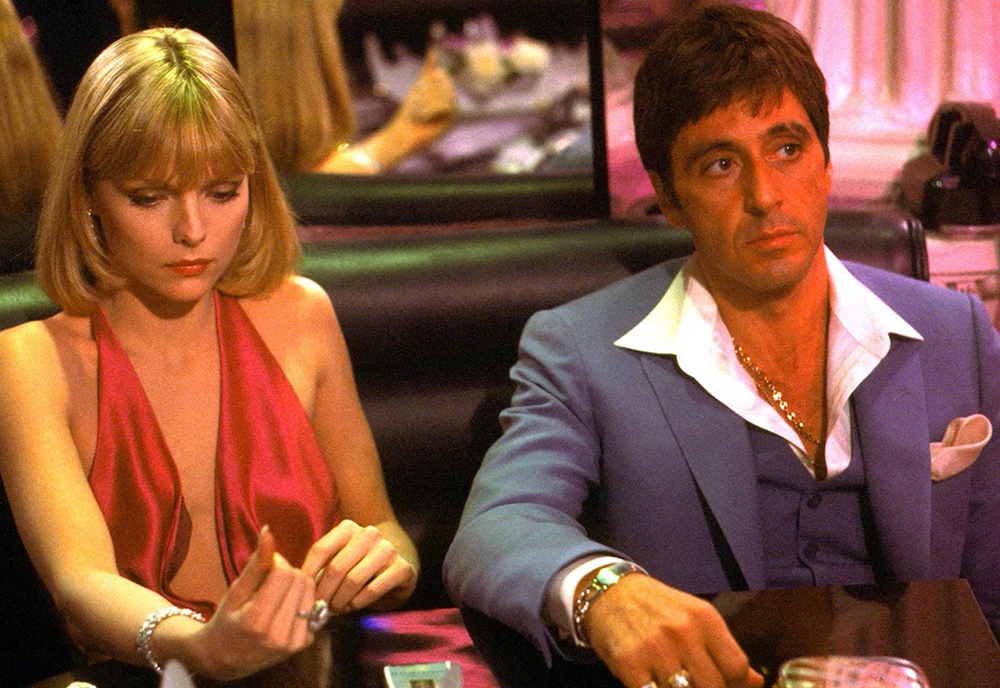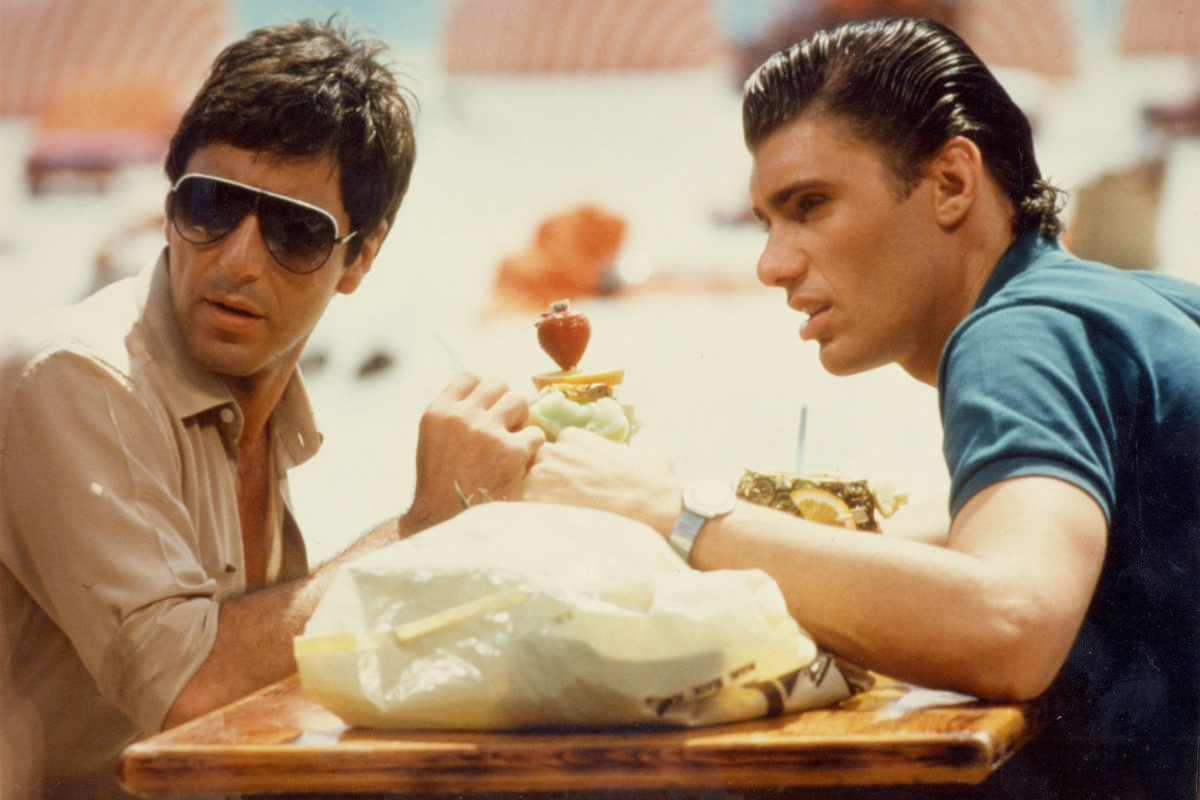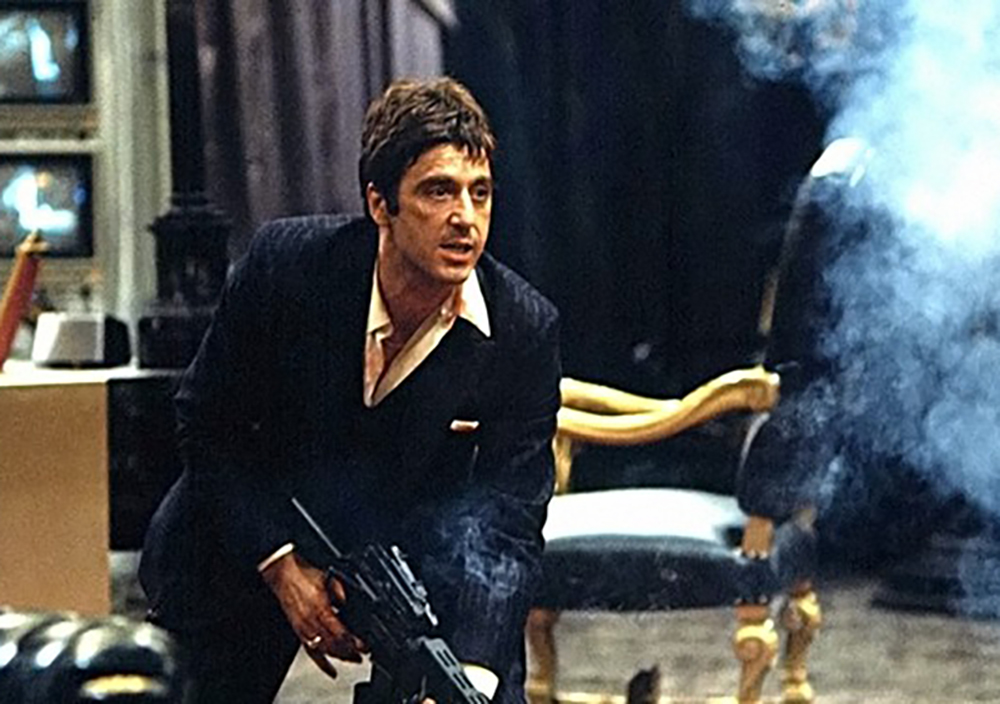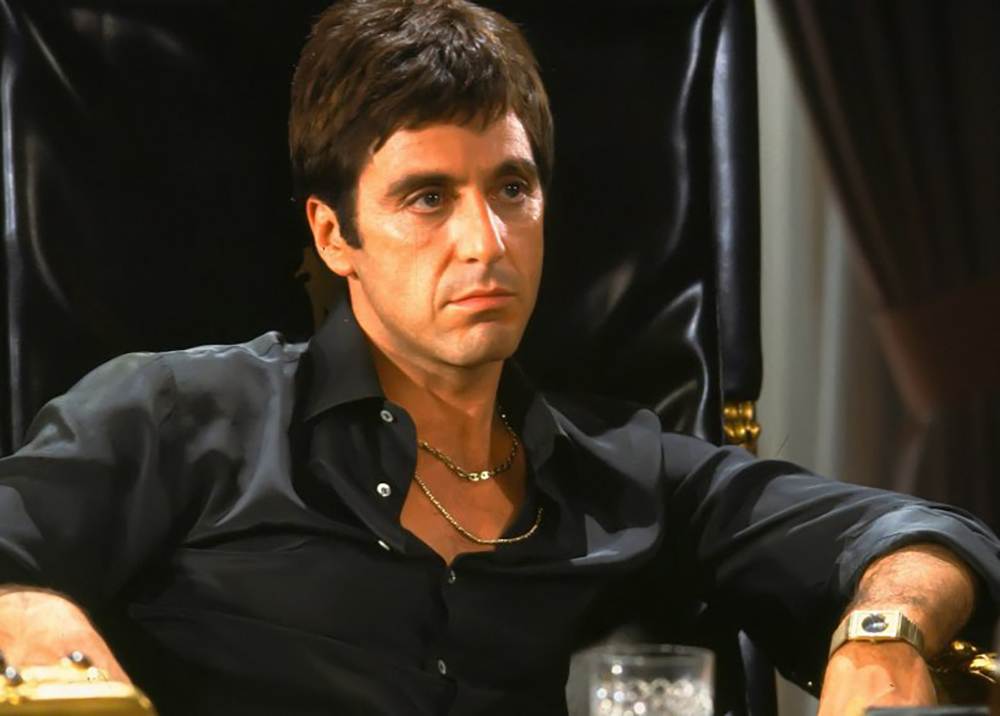“Scarface” was that movie that, when I was younger, everyone gasped in disbelief when I said I hadn’t seen it. With a chip on my shoulder I eventually rented it, and still remember the experience. While captivated, I wasn’t immediately ‘blown away.’ But that’s not the kind of film “Scarface” is. At nearly 3 hours long, the film is captivating from the start, slow to build, and a character actor’s dream. It doesn’t so much glorify violence as it describes it in perfect rise and fall methodology. Many would argue it is among Pacino’s best work—and it is. It also perfectly immerses viewers completely in ’80s subculture and south Florida crime.
The film is directed by Brian De Palma (who helmed 1987’s “The Untouchables”), and is written by Oliver Stone. Stone directed ’87’s “Wall Street,” and those familiar with the film know the attention to detail Stone puts into his work. Michael Douglas remarked Stone made him redo his famed “Greed is Good” scene a superfluous amount of times. But Douglas won an Oscar for “Best Actor in a Lead Role,” so I guess Stone knew what he was doing.
With quick pans, we are introduced to De Palma’s version of 1980’s Miami: from a fading speech from Fidel Castro, to boats heading to Miami full of refugees (and criminals), to interrogations at the border by overwrought custom’s officials. “I don’t believe a word of it,” decries one. “That son of a bitch Castro is shittin’ all over us.” His interviewee is Tony Montana (Al Pacino), who gets his nickname ‘Scarface’ by a scar that runs along the left side of his face.
Joining Montana from Cuba is his friend and compatriot, Manolo (Steven Bauer), and the two quickly find their way out of the violence-filled ‘Freedomtown’ detention center. Manolo plays his part and gets the two in line for a Green Card. Tony does his part too: by killing an ex-Castro sympathizer in a violent fashion.

Cinematically, “Scarface” is near perfect. Miami sunsets and ocean views give way to grimy streets and criminal elements. One of my favorite shots in the film is when we see a beautiful, picturesque closeup poster of ocean and hotels, “Little Havana Paradise” scrawled on top, but pans down to Manolo and Tony working in t-shirts and aprons in a disheveled sidewalk canteen. Trendy nightclubs—richness, opulence, the American Dream—is across the street. But Tony and Manolo aren’t yet part of it.
Tony is a talk first, ask questions later kind of guy; ironically it’s his big mouth that initially helps to lift he and Manolo out of poverty, if only later to get him in big trouble. He meets a local cocaine kingpin named Frank Lopez (Robert Loggia), who couldn’t have been further from “Big” with this role. He runs a seemingly successful cocaine business, has a beautiful mansion, beautiful cars, and a beautiful girl (Michelle Pfeiffer). After a risky run-in with some Columbians, Tony is in Frank’s good graces.
“Scarface” runs like a true rise and fall tragedy. A host of characters appear along the way, such as one of Frank’s sidekicks who Tony quickly despises (F. Murray Abraham), a drug Czar, Alejandro Sosa (Paul Shenar), and Tony’s long-lost sister Gina (played by Mary Elizabeth Mastrantonio).
De Palma sets these people on a crash course with their personalities, egos, and desires. Manolo wants love. Frank wants a low-key business and opulent life. Sosa wants a big business partner. And Tony wants it all. Was there any way for this to end well?

A number of elements make this film excellent, from the production value all the way down to the score. The set pieces are quintessential ’80s and perfect. We see a drug deal in Miami’s picturesque South Beach, assassination attempts in neon-lit nightclubs, and shady deals with cops in backroom bars. The costume design is wonderful, decking the cast out in floral shirts, gaudy gold chains, and defining South Beach fashion in exquisite form.
This is cloaked in a brand of violence that seems to happen despite its main character. Tony has a ‘screw ’em’ mentality to his enormous ego that seems not to blink an eye at personal harm anything will cause him. “I want the world…and everything in it,” he flippantly retorts when Manolo warns him about going after the boss’ girl.
The score is really remarkable, from ’80s pop songs that litter its clubs, to shrill, piercing synthesizers the film uses to highlight Tony’s rage. This is best seen on two different occasions: one, as Tony reproaches Manolo for looking at his sister lustfully, the second when he sees his sister dancing with a guy at a nightclub. When Tony’s angry, reason goes out the window.
The acting is superb. Pacino easily disappears into Montana, slipping further and further into insanity and addiction as the film progresses. Early scenes make us like him, as when he talks to Manolo about American life, cars, and women. But later scenes scare us blind, as he slips down the slope of dependence: both on the cocaine he sells and the power he craves.

Loggia plays the aloof Frank well, and my other favorite actor has to be Paul Shenar as Sosa, who creates a menacing character we know means business.
Mastrantonio is also fleshed out well and delivers a performance unlike other films like “Robin Hood: Prince of Thieves” or “The Perfect Storm.” Her and Tony have a dysfunctional relationship that adds to the drama in key ways throughout.
The only role that I found slightly off-putting was that of Pfieffer’s Elvira. As first Frank’s love interest and later Tony’s, she gets lost in a script meant for mean criminals, and lacks much purpose for being there. While strikingly beautiful, character development and motive just aren’t there. It’s as if Stone and De Palma needed a beautiful woman, and thought that would be enough to explain her role in the proceedings. She’s a plot device, and sadly nothing more.
“Scarface” is just an excellent film. It paints a definitive picture of ’80s Miami, has developed and likeable characters (even when you hate them), and follows them ambitiously. The cinematography, score, settings, and action sequences are all top of the line. The film definitive earns its rating with a hard ‘R,’ but a movie like this has to. Its tragic ending highlights the proceedings that much more effectively.
Whether “Scarface” is a classic must for you, or you’ve never seen the film, it’s an exhilarating and engrossing entry into this month’s ‘Mob Movie March.’


